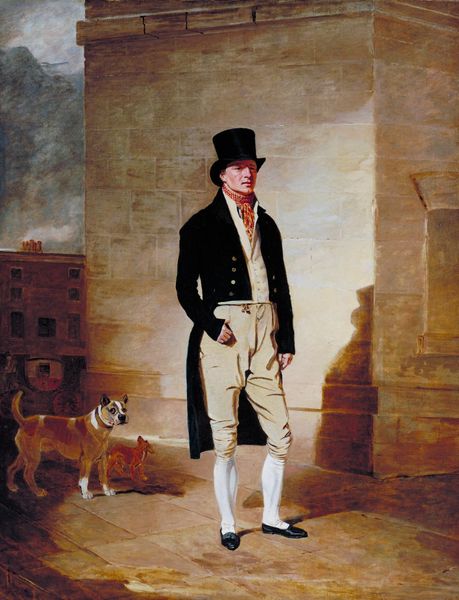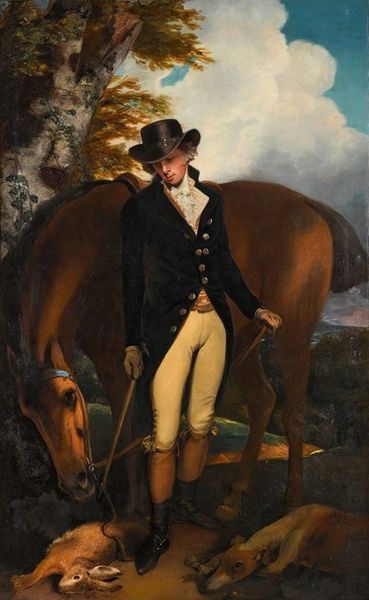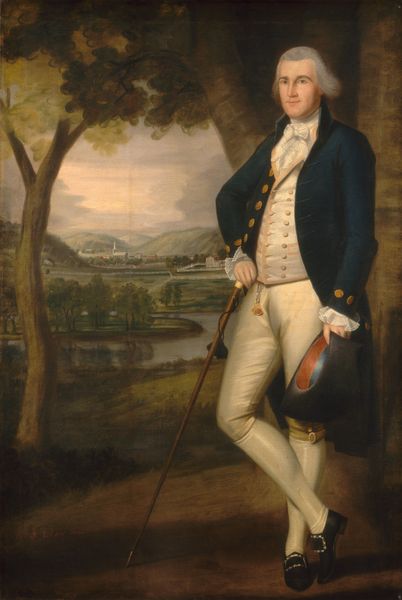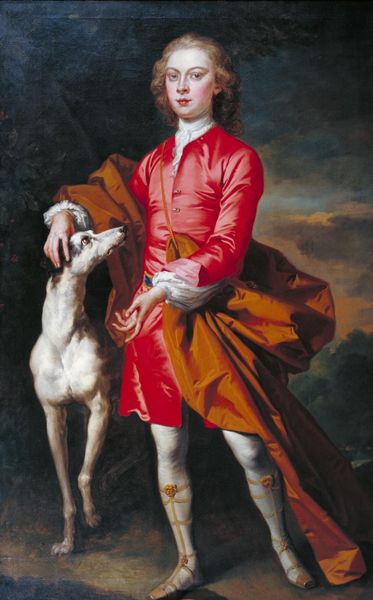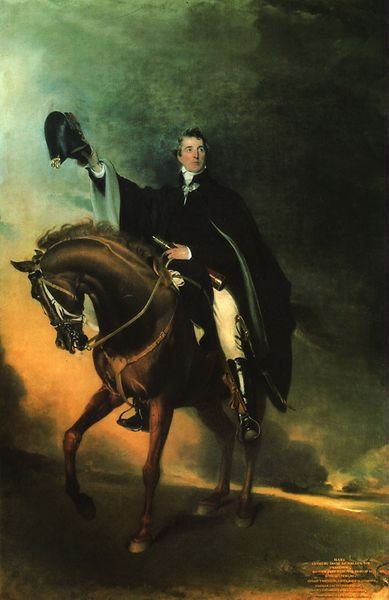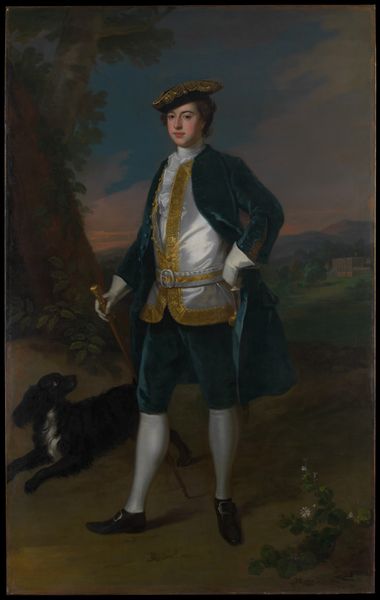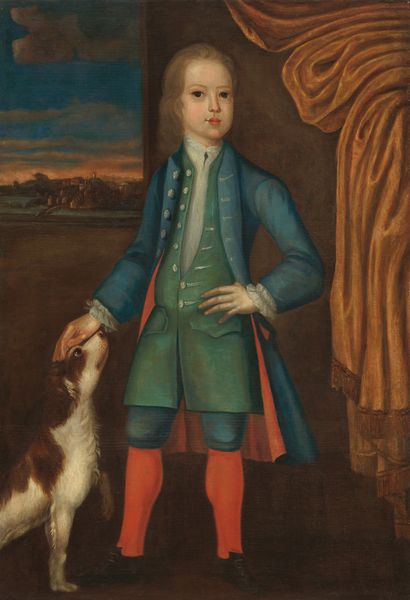
Dimensions: 210 x 130 cm
Copyright: Public domain
Curator: Here we have Francisco de Goya’s "King Charles IV in Hunting Costume," an oil on canvas completed in 1799. The portrait resides today in the Palacio Real in Madrid. Editor: My immediate impression? The colours, though muted, feel vibrant somehow. And the scale… there’s a disquieting intimacy in the way he's rendered almost life-size, standing next to his rather well-behaved hunting dog. Curator: Interesting observation regarding the colour palette. I am particularly drawn to how Goya utilizes the cascading light, specifically how it strikes the textures of the elaborate hunting garments, achieving a compelling interplay between light and shadow. It's this kind of close visual analysis that unveils the masterful semiotic encoding of status and identity. Editor: I’d argue that Goya presents Charles IV with a keen eye toward communicating power and legitimacy. The history of monarchy and public perception in that moment of aristocratic decline significantly shapes this composition, with his confident posture alongside a landscape, meant to imply sovereignty and dominance in a time when those qualities were very much in question. The king even appears progressive in his more informal clothing. Curator: Ah, but consider the formal devices employed: The arrangement of the composition follows a rigid geometric logic, almost pyramidal, lending stability. Even his gaze feels composed, which belies the tumultuous political backdrop. Isn't this tension itself a key aspect of Goya's method? Editor: Undoubtedly, but I read it within a very particular context. Remember the rise of Enlightenment ideals and the scrutiny leveled at monarchical authority. Goya subtly responds to these forces, crafting an image of royalty, intended for a society deeply divided. Notice how, with his back partially facing into nature, he's stepping away from the baroque court of old? Curator: Certainly. And to bring it back to materiality, one must attend to Goya's confident brushwork – the bravura passages defining the hunting garments create a compelling sense of realism. Editor: Yes, through the portrayal, we catch a moment frozen in time. It is art fulfilling its social function to express what couldn't simply be stated aloud in 1799. A fascinating painting layered with complex socio-historical connotations. Curator: Precisely. The painting provides ample ground to delve into how visual formalism informs contextual understanding, thus bringing us closer to its genius.
Comments
No comments
Be the first to comment and join the conversation on the ultimate creative platform.



